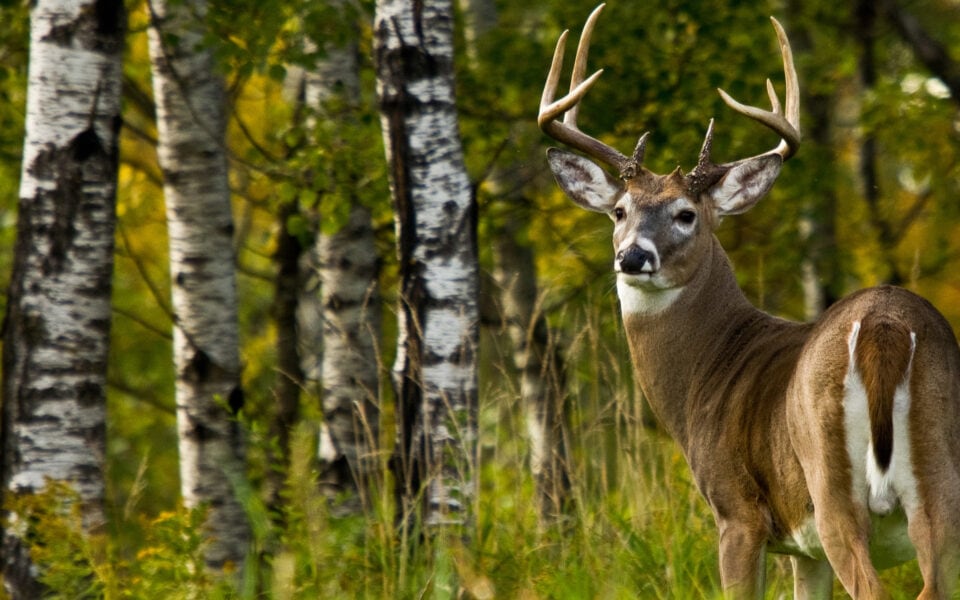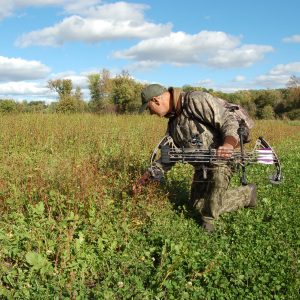Food plots are for many of us the most fun and dramatically rewarding part of being a gamekeeper. But as you delve deeper into habitat and wildlife management, it becomes clear that there are plenty of other improvements that need to be made to the habitat if your goal is to attract and hold mature bucks on your property.
Attending to these “extra” things besides food plots becomes especially important for those who, like me, only have a hundred or few hundred acres. If you have thousands of acres of mixed habitat and let young bucks walk, chances are you already have some older bucks present.
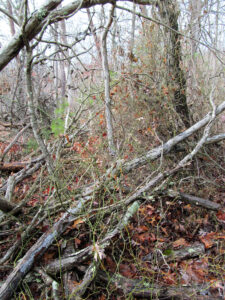 For those of us with less acreage, packing the maximum amount of things that will attract and hold older bucks in a small area and managing it extra carefully are especially important. Here are 12 projects and management principles that will help make your land attractive to older age-class deer. There are certainly other steps you can take, but these are good ones to start with.
For those of us with less acreage, packing the maximum amount of things that will attract and hold older bucks in a small area and managing it extra carefully are especially important. Here are 12 projects and management principles that will help make your land attractive to older age-class deer. There are certainly other steps you can take, but these are good ones to start with.
If you don’t give the deer these things, chances are your neighbors will, and that’s where they’ll go.
Before getting started, realize that to get the maximum benefit from these projects, you need to carefully analyze your property using topos, aerial photographs, and your knowledge of the land to lay them out for maximum attractiveness to the deer and maximum enhancement of your hunting success. The latter aspect requires careful consideration of things such as best access to stand sites, prevailing wind direction, sun angle, approach cover, and other factors. But knowing where the different types of cover and food are that you have put in place will help you know how the deer will travel and where they will likely bed as they make use of the habitat enhancements you’ve made.
1. Create a transition corridor
Most land is to open for prime deer habitat and big bucks don’t get old by traveling where they can often be seen.
Locate a natural potential travel route from bedding to feeding areas or between doe bedding areas and make it appealing to bucks by adding a variety of shrubs or tall annual grasses and partially felling a few low value trees. This serves two purposes. Besides offering cover, a lot of the species you plant will also offer food as will the hinge cut trees. That will make the travel corridor even more appealing.
Here’s an example. You have a small stream or drainage ditch flowing through an area that could be a big buck travel route between doe bedding areas, feed fields or blocks of timber, but it’s too open. Without brush and trees, only does and young bucks will likely use it during daylight. Put in a swath of shrubs that grow 5-8 feet tall or cover grasses such as Blind Spot along the creek, however, and mature bucks will start using it because they’ll feel secure there.
A number of different shrubs will work well for this project. Some good ones to consider are: native American honeysuckle bushes, dogwood shrubs (graystem, silky, or red osier), lespedeza, crab apple, Chickasaw plum, chinquapin, viburnum and indigo bush. They’ll not only create security cover, deer will nibble on most of these plants, adding to the travel corridor’s attraction.
Plant two rows of these bushes on the side of the creek a buck would likely travel, 8-12 feet apart. For variety and winter cover, you can mix in a few pines or cedars.
2. Provide minerals
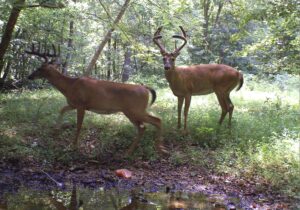 Maybe you’re fortunate enough to have a natural mineral site on your property. Most of us, though, are less fortunate and need to build one or more mineral licks to satisfy the deer’s need for macro and micro elements that they don’t get enough of from natural foods, crops and food plots.
Maybe you’re fortunate enough to have a natural mineral site on your property. Most of us, though, are less fortunate and need to build one or more mineral licks to satisfy the deer’s need for macro and micro elements that they don’t get enough of from natural foods, crops and food plots.
BioRocks are good. I also like to dig up and mix in Full Potential into the top 8-12 inches of soil in several key sites for every 50 acres of land. Place them in or near cover, where a mature buck is more likely to make use of them. By putting that many sites out, you can monitor which ones are most attractive and keep those activated while eliminating the others. Refresh them as needed, but avoid checking the site too often.
3. Add water
This one is pretty obvious. If a deer doesn’t have a source for water that it feels comfortable using it will move off your land to find it. If you expect him to use it during daylight, it needs to be in or adjacent to cover, with a route leading to it that doesn’t make him expose himself. If the source you have is in the open, you should build a travel corridor to it (see step one) with cover.
Water sources don’t have to be big or elaborate. You can often use rocks and logs to dam a small wet-weather stream. Placing water troughs, kids pools, or pond liner plastic in dug out spots is another relatively easy project.
If you want to tackle both mineral and water needs in one step, consider the Banks Outdoors Watering Systems with their H2O Wild Water Mineral Supplement added to the water.
4. Create or enhance staging areas
Crop fields and food plots are attractive to deer, but if they appear abruptly at the edge of open woods, mature bucks might not move into them until after dark. By adding or enhancing a staging area between the field and woods, older bucks will feel comfortable hanging out in these areas and perhaps even approach the plots in daylight.
Cut down some low-value trees along the border to create a thicket of brush. Leaving some of the tops partially attached makes even more valuable cover.
Grape vines, greenbrier and honeysuckle will grow up the fallen trees and form thick shelter that big bucks crave as they approach an open feeding area. And those plants are also great foods for deer.
Add a few bushes from a nursery to fill in spots that are still too open and you’ll soon have a staging area bucks feel comfortable using well before dark. The edge should be at least 75 feet deep, 100-150 feet is better still. Be careful not to make the area too thick, though. Deer also like to socialize and see each other in these areas.
5. Plant native warm season grasses
 This not only keeps more mature bucks on your property, it also benefits species such as quail, pheasants, turkeys and song-birds. Switchgrass is one of the easiest to grow and my favorite warm season grass. If you are considering planting a wet area, it’s definitely the one to choose. It can survive up to 30 days in standing water. Other species should also be considered such as Indian grass and big and little bluestem. I like to mix several of these in my plantings.
This not only keeps more mature bucks on your property, it also benefits species such as quail, pheasants, turkeys and song-birds. Switchgrass is one of the easiest to grow and my favorite warm season grass. If you are considering planting a wet area, it’s definitely the one to choose. It can survive up to 30 days in standing water. Other species should also be considered such as Indian grass and big and little bluestem. I like to mix several of these in my plantings.
These grasses will grow from 5-7 feet tall, providing great cover for both mature bucks and does which will draw in those bucks. You can plant these by broadcasting the seed and covering it lightly, but drilling is preferable.
Special drills for these seeds are often available from local conservation agencies or farm co-ops. Since this is a strong conservation step for the land, government programs can sometimes be used to help finance seed purchase and planting.
It’s not important to have large warm season grass fields. The main thing is to locate the stands in good strategic spots where deer will use them to bed in or go to when there’s pressure in other areas. Putting in several small plantings in long narrow fields is an excellent strategy.
I prefer not to hunt these warm season grass fields. Their best use is to hold deer on your property. On the other hand, hunting near them is a good way to intercept a buck moving out of the stand to chase a hot doe. This tactic yielded a huge eight pointer for me recently with bases just shy of six inches.
6. Add shrubs and vines
Habitats that are mostly open crop fields and mature woods can benefit from releasing and enhancing any shrubs and vines present and planting others. If you have Japanese honeysuckle, fertilizing can double the forage production of this non-native, but still valuable plant for deer. Also nurture any raspberry, blackberry, greenbrier, and plum shrubs on the property. These offer both food and valuable cover.
Trim them back if they are growing too high for deer to reach or pull the vines down. Also daylight them if low-value trees are shading them by cutting back overhanging branches of those trees. Adding lime and a 10-10-10 type fertilizer can also help.
If you lack these shrubs, consider planting rows or clusters of them or other plants such as strawberry bush, American beautyberry, shrub dogwoods, crabapple, and mulberry.
7. Build big buck bedding cover
Mature deer might walk through your land or venture onto it looking for does as the rut swings in. They might visit food plots you’ve created for a bite to eat, but you’ll never have old bucks stay on your land without good bedding cover.
Fortunately, that’s easy to create if you don’t have it. The first step is to select a good location. I like to position it far from human activity, close to the center of the property. A good spot would be on a shelf or bench or just a slight rise if that’s all the elevation that’s available. The heads of hollows are also good.
Bucks like to bed high and move low in the afternoon to feed or chase does. They typically choose the leeward side of a ridge or hill based on prevailing winds. Put your beds in these spots for maximum use.
Using a chain saw, cut some low value trees in the spot you’ve chosen. Don’t knock everything down, but enough to create a jungle-like rough and congested area that bucks will take to. Cut mostly low quality, bent, injured or diseased trees, and just hinge cut some of them.
Before starting, learn the safety rules for logging and always wear the proper protective gear. If you aren’t comfortable doing this work, hire a professional. He might cut the wood for firewood or pulp and take a few saw logs that you specify to make it worth his time coming in for the job.
Besides creating a bedding area, this cutting also allows additional light to enter the woods by removing some of the overhead canopy that shades the forest floor. This lets new shrubs and forbs that offer valuable deer food emerge species such as raspberry, blackberry, honeysuckle, greenbrier and grapes. That makes the jumble of fallen timber even more appealing as a buck hideout.
Maple stumps from the cutting will also generate shoots that bucks snack on. Eventually saplings will spring up, adding even more cover.
Since you build this bedding area yourself, you’ll know exactly where it is and how it’s laid out. With trail cameras you’ll be able to quickly learn the routes bucks use as they head to it in the morning and leave in the afternoon—prime stand sites.
8. Create a thermal refuge
To keep deer on your land during inclement weather, you need a thermal refuge. These can be anywhere from a half to several acres, close to the center of your property when possible.
A dense grove of pines, spruce, or cedars offers deer thermal cover and shields them from blustery winds, snow and sleet in winter. The conifers are also immensely valuable as psychological security cover, offering great escape areas.
When hunting pressure mounts on nearby lands, there’s nothing a buck craves more than thick cover and seclusion. His life depends on it. A grove of dense young evergreens in a secluded spot is just what he’s looking for.
Species may vary according to what will do well in your area. I particularly like white pines. Plant as large of an area as you can, anywhere from one-half to several acres.
To add extra wind protection and bedding cover, also fell several low-value small to medium trees, cutting some through and hinge cutting others. Intersperse these through the conifer plantings.
9. Plant oaks
Most properties managed for whitetails have some of these, but you can improve their output by thinning trees around them. If you have enough open land, by all means consider planting more oaks purchased from state forestry departments or sources such as Nativ Nurseries. Try to put in some early maturing and some late-maturing nut varieties. Planting these in open areas rather than woods will make them magnets for old bucks with the heavy mast crops they’ll produce there.
10. Give them fruit
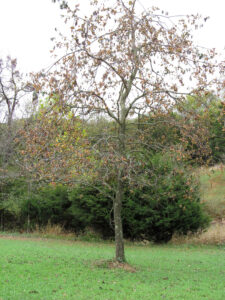 They may not be important in the overall nutrition of a picture of a mature buck, but fruit trees of species like pear, apple, mulberry, peach, and persimmon offer treats that will hold and draw deer to your property. They also provide a vital energy boost just before the rigors of winter set in and are packed with phosphorous and vitamins.
They may not be important in the overall nutrition of a picture of a mature buck, but fruit trees of species like pear, apple, mulberry, peach, and persimmon offer treats that will hold and draw deer to your property. They also provide a vital energy boost just before the rigors of winter set in and are packed with phosphorous and vitamins.
Plant them in areas receiving at least five hours of sunlight. Slight slopes are good, rather than bottoms. Put in at least six trees in each location so they will cross pollinate. If possible, put tree shelters around them so they don’t get damaged by deer and rabbits.
11. Delineate sanctuaries
No matter how small your property, it’s vital to have some part of it placed off limits to any human activity except entering to retrieve a hit deer. It should have some cover, perhaps including some of your bedding areas and thermal cover sites. The rougher, thicker, and steeper the terrain, the better. If it’s an ideal habitat, five or ten acres may suffice for a sanctuary. In most cases much larger areas are better, up to 25-50 percent of a property sometimes.
Besides delineating sanctuaries, also keep pressure light on areas that are hunted. Don’t use a stand when the wind is wrong or where the deer will be spooked by your entrance or exit from the stand. It won’t take much of that before mature bucks either leave your property or become nocturnal. Also keep a lid on non-hunting access and activities. Mature bucks and human activity simply don’t mix.
12. Integrate Improvements
Don’t just “scatter” these improvements throughout a property. Rather, integrate them so they mesh and complement each other, helping, instead of hindering, your hunting success. And don’t forget to ask for help and advice from other gamekeepers nearby with similar properties.
Often state wildlife biologists will visit your land and give recommendations for free. Institute as many of the habitat projects described here as you can and chances are any mature bucks in the area will make your land their home year-round.

